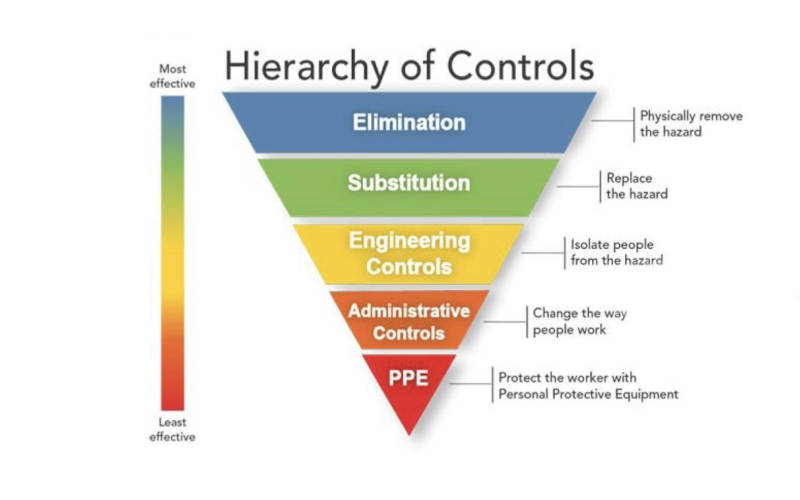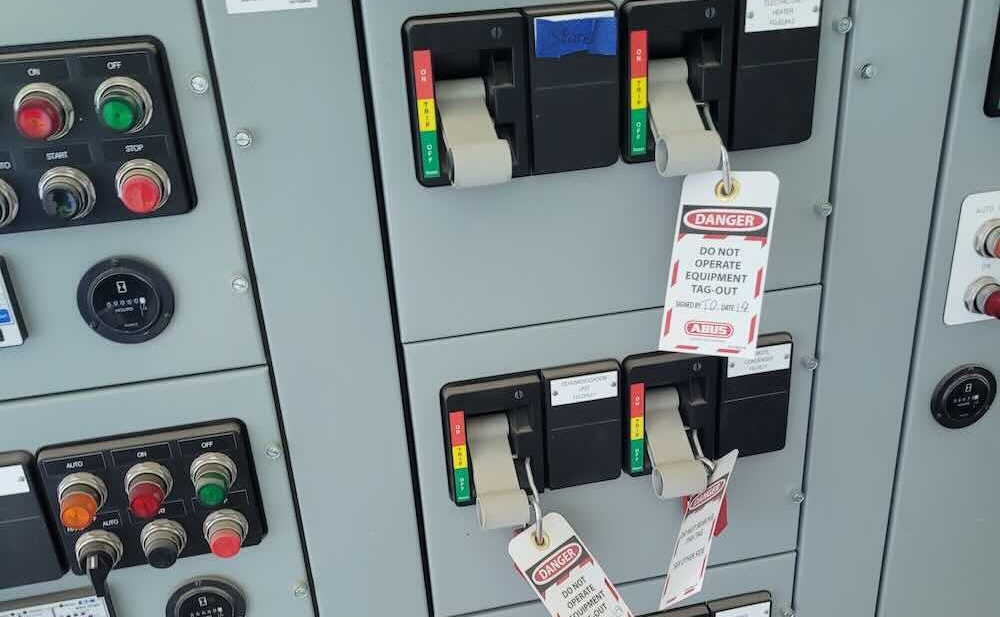Let’s face it; thanks to the challenging economy and downsizing most of us have more projects and fewer resources to make them happen. With this mind, I’ve summarized the most important updates you should consider incorporating into your electrical safety program. If you incorporate these changes, you’ll be well on your way to creating a more effective electrical safety program.
The new 2009 Edition of the NFPA 70E: Standards for Electrical Safety in the Workplace became effective Sept. 5, 2008. More than a year has gone by and many plants have yet to incorporate the most critical updates into their electrical safety program.
Let’s face it; thanks to the challenging economy and downsizing most of us have more projects and fewer resources to make them happen. With this mind, I’ve summarized the most important updates you should consider incorporating into your electrical safety program. If you incorporate these changes, you’ll be well on your way to creating a more effective electrical safety program.
Update 1 – Arc Flash Hazard Analysis Requirements
There are two ways to perform an arc flash hazard analysis
- Incident Energy Analysis uses IEEE 1584 equations (Annex D) to determine the amount of incident energy exposure of a worker and is measured in cal/cm2. The incident energy analysis requires that some electrical system data be obtained before the arc flash hazard analysis can be completed. Once the available incident energy is calculated then the appropriate PPE can be selected and used.
- Hazard/Risk Categories (HRC) which permits the use of tables 130.7(C)(9), 130.7(C)(10), and 130.7(C)(11) to select the appropriate PPE for the task specified in the tables. If an employer has a particular task that is not specifically specified in the HRC tables the incident energy method must be used. When using the HRC method it is important to note that there have been several significant changes to table 130.7(C)(9).
For example, the HRC has increased for several tasks within the table and several tasks have been added to the table (i.e. racking of CBs from cubicles, doors open or closed increased from HRC 3 to 4).
There are several notable changes/ additions to the requirement of the arc flash hazard analysis:
- The standard now requires that the analysis must be updated when major modifications or renovations occur and employers must conduct periodic reviews of the arc flash analysis, not to exceed five years, to account for any changes to the electrical distributions system (utility upgrades, etc.).
- The requirement for performing analysis on systems rated 240V and below has been removed. There are some exceptions to the Hazard Analysis requirement and employers and employees should reference the 2009 70E standard.
Update 2 – New ppe requirements
Article 130.7 covers the personal and other protective equipment that is required by the standard anytime a person(s) performs work on energized electrical conductors or circuit parts. It is important to note that all parts of the body inside the Arc Flash Protection Boundary must be protected. The most notable changes are:
- When the HRC tables 130.7(C)(9) are used in lieu of an incident energy analysis, HRC 2* now has a provision that allows either an arc-rated arc flash suit hood or a face shield with a minimum arc rating of 8 cal/cm2 and balaclava (sock hood). This is a good alternative because sometimes the arc flash suit hood can increase the chances of an accident because of limited visibility and reduced oxygen flow to the body.
- HRC 1 now requires that employees must be protected with a face shield, long pants and shirts which must be arc-rated and flame resistant with a minimum arc-rating of 4 cal/ cm2. Table 130.7(C)(10), note 3.
- Employees that are required to wear hair and/or beard nets must wear non-melting and flame resistant (FR) hair or beard nets. Article 130.7(C)(3) & 130.7(C)(15).
- FPN No 1 in Article 130.7(A) states, “The PPE requirements of 130.7 are intended to protect a person from arc flash and shock hazards. While some situations could result in burns to the skin, even with the protection selected, burn injury should be reduced and survivable. Due to the explosive effect of some arc events, physical trauma injuries could occur.”
- The HRC level can be reduced by one number for equipment protected by current-limiting fuses, see general note (f) for details.
Update 3- Classifying employees as either Qualified or Unqualified
Overall, you’ll find increased clarity throughout the 2009 Edition. For instance, it is very important to understand how employees are classified as either “qualified” or “unqualified.” A “qualified” employee is defined as “one who has the skills and knowledge related to the construction and operation of the electrical equipment and installations and has received safety training to recognize and avoid the hazards involved including shock, arc flash and arc blast.
“Unqualified” employees are only allowed within the Limited Approach Boundary when accompanied by a “qualified” employee and NEVER should be allowed within the Restricted Approach Boundary when energized electrical conductors or circuit parts are exposed.
Update 4 – Lockout/tagout procedure
When establishing an electrically safe work condition it is important to encourage qualified employees to use techniques that follow the 70E standard. Employees should view every electrical conductor or circuit part as energized until all six steps noted in Article 120.1 of the standard have been met.
The most significant change here addresses the complex Lockout/Tagout procedure. There are three major additions: (1) The identification of the person in charge of the lockout/tagout procedure must be established in a written plan of execution; (2) Primary responsibility shall be given to an authorized employee for all personnel involved under the protection of a group lockout or tagout device. (3) Each authorized person involved in the lockout procedure must affix a personal lockout or tagout device for which he or she is responsible from removing when their portion of work is completed. See 120.2(D)(3) for details.
Update 5 – energized electrical Work permit
The Energized Electrical Work Permit was established to assist employers with evaluating how often their employees are being exposed to potential shock, arc flash, arc blast hazards. This permit gives an employee an opportunity to assess the work to be performed and note the potential hazards involved with completing the work task and protect themselves appropriately. In the past, there was some confusion on how employers and employees could comply with this requirement. The 2009 Edition gives additional guidance on how to develop a work permit program by adding a flow chart to complement the sample work permit, which can be found in Annex J page 70E-85-86.
Employers need to ask two questions when energized electrical work must be performed:
- Is work being performed on energized electrical conductors or circuit parts above 50 volts to ground?
- When can I take exception to the work permit requirement?
Visual inspections are now permitted without the completion of a work permit provided the Restricted Approach Boundary is not crossed. De-energizing electrical circuits that operate at less than 50 Volts is not required by the 70E standard; therefore, no work permit is required.
A work permit is also not required for work performed within the Limited Approach Boundary by qualified persons for task such as testing, troubleshooting, voltage measuring, etc., provided that the appropriate safe work practices and PPE are used.
This change allows for “unqualified” employees to perform visual inspections and task such as thermal imaging provided the “unqualified” employee is accompanied by a “qualified” employee.
Update 6 -Redefining Flash Hazard
In the previous version of the 70E standard, “Flash Hazard” was defined as, “A dangerous condition associated with the release of energy caused by an electric arc.” This implied that you did not need to protect yourself from a hazard unless an electric arc occurred, which defeats the purpose of the safety standard all together.
The new definition of “Arc Flash Hazard” is, “A dangerous condition associated with the possible release of energy caused by an electric arc” and clearly aims at the protection of workers from a potential hazard.
Update 7 – New Labeling Requirements
There is a new requirement for labeling in Article 130.3(C), which requires field markings on equipment that indicate either the available incident energy or the required level of PPE. The previous standard only required that equipment labels warn workers of an arc flash hazard.
Conclusion
Hopefully, the task of updating your Electrical Safety Program for compliance with the 2009 Edition is much less daunting now that you know what to focus on. It is very important to evaluate when and where it is feasible to de-energize electrical equipment.
A proper Lock-Out Tag-Out program is the only way to virtually eliminate an employee’s exposure to potentially dangerous shock, arc flash and arc blast hazards. Employees need to be qualified when working on electrical equipment whether energized or not. Only qualified employees should be verifying the absence of voltage.
About the author
Byron Jordan is a field engineer with Ferraz Shawmut.



